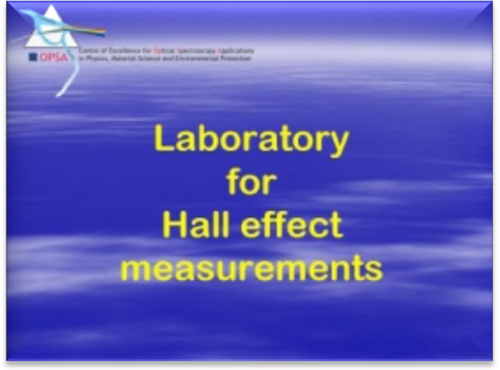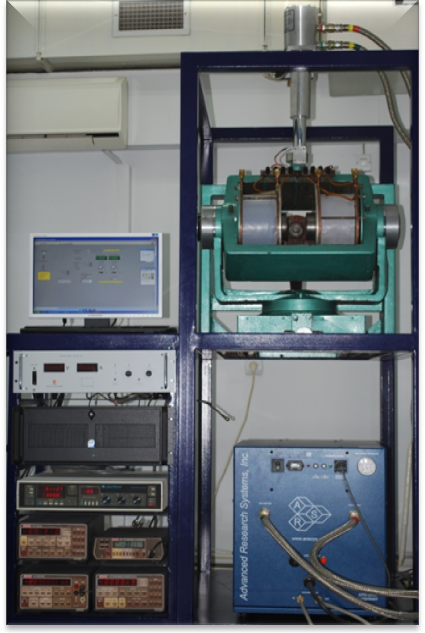
Laboratory for transport properties measurements (Hall effect set-up) is equipped with a conventional electro-magnet (magnetic field up to 1.5 T), a Hall effect set-up and an ARS Displex DE-202N closed-cycle-helium cryostat (for low temperature measurements between 7 and 300 K).

The transport properties measurements (Hall effect experiment) consists of:
-
The Electromagnet (hand made). This electromagnet can realize a magnetic field of up to 1.5 T for pole distance of 1 cm. In case of low temperature measurements, the pole distance is 7 cm and the maximum value ofthe magntic field is 0.5 T.
-
The Power supply for electromagnet is Delta electronika series 3000, model SMD: 120 V - 25 A.
-
The Keithley 220 Programmable Current Source: (DC current range: 2 nA – 100 mA).
-
The Keithley 705 Scanner with Keithley 7065 Hall Effect Card, which is designed to assist in making resistivity and Hall voltage measurements on several types of semiconductor speciments.
-
The Keithley 196 System DMM is a five function autoranging digital multimeter. The DC voltage measurements from 100 nV to 300 V. Resistance measurements from 100 mW to 300 M W. AC voltage measurements from 1 mV to 300 V. DC current measurement from 1 nA to 3 A., and AC current measurements from 1 nA to 3A.
-
The Close cycle helium gas cryostat (ARS, model Displex DE-202N) for temperature measurements between 6 and 300 K.
-
The Lake Shore DRC91CA Temperature Controller.
-
A Pfeiffer Vacuum pump for air evacuation from cryostat.
-
A PC computer for experiment running and data collecting.
Measurements:
Using the Hall-effect set
up it is possible to measure:
1. Specific electrical resistivity using the Van der Pauw method.
2. The Hall voltage, i.e. the Hall constant. Combying this and the
electrical resistivity data it is possible to determine carriers type,
concentration and mobility.
Specific electrical resistivity measurements are done using the
Van der Pauw method. At first, it is necessary to create 4 electrical
contacts on the sample. The electrical resistivity is measured by
applying the current between two adjacent terminals and reading the
voltage at the other two terminals. The total of 8 measurements is made
for all possible combinations of measurements among the 4 contacts. A
specific electrical resistivity is calculated according to the Ohms law
using values of applied currents and measured voltages, taking into
account the proportionality coefficients based on the shape of the
sample.
 |
|
Electrical resistivity of YBa2Cu3O7 superconducting oxide. |
Center
for Solid State and New Materials :: Facilities
:: Laboratory for
transport properties measurements (Hall effect set-up)::
print